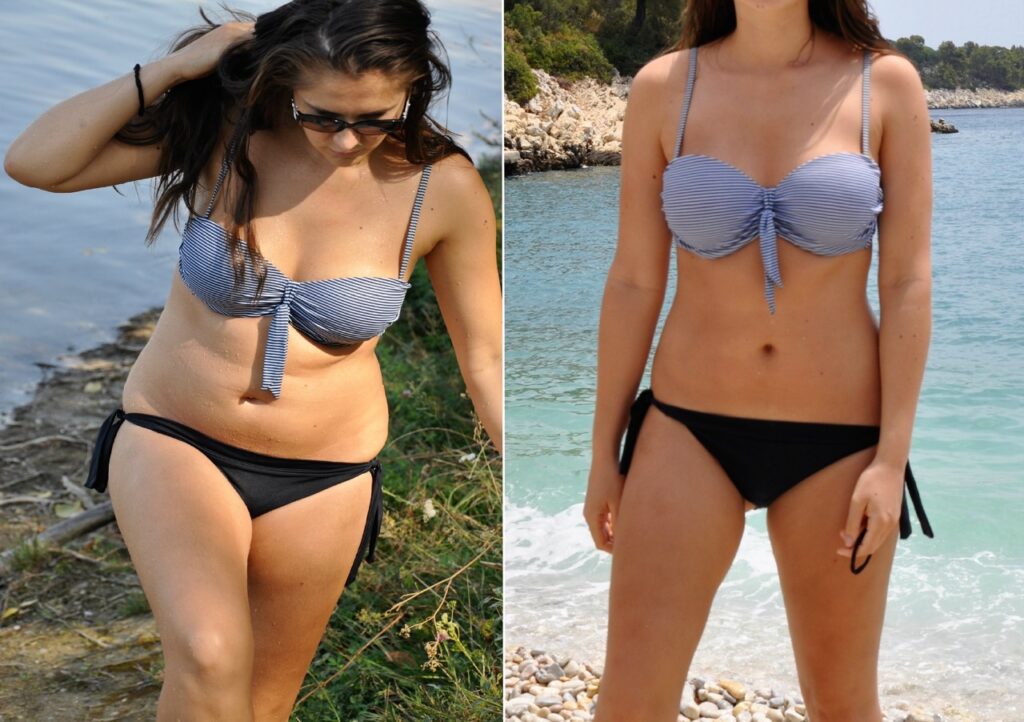Physical activity is the cornerstone of a healthy lifestyle, and it plays a crucial role in weight management, cardiovascular health, and overall well-being. In this blog post, we’ll explore the Canadian Society for Exercise Physiology’s 24-hour Physical Activity Guidelines and get into the significance of muscle maintenance during weight loss. Whether you’re striving for better fitness, seeking to shed pounds, or simply aiming to lead a healthier life, understanding these guidelines and practices can make a significant difference.
Physical Activity Guidelines
The importance of physical activity cannot be overstated. It’s not just about hitting the gym for an hour and then leading a sedentary lifestyle for the rest of the day. The Canadian Society for Exercise Physiology (CSEP) emphasises the significance of daily movement with its 24-hour Physical Activity Guidelines, which divides movement into three categories: moderate to vigorous aerobic physical activity, light physical activity, and muscle strengthening activity.
For adults between the ages of 18 to 65, the recommended amount of moderate to vigorous aerobic physical activity is 150 minutes per week. Aerobic physical activity encompasses a wide range of activities, from traditional endurance exercises to sports or leisure activities that increase your heart rate. This recommendation increases up to 300 minutes per week for weight loss and weight-loss maintenance, depending on your biology and lifestyle.
At this point, you may be asking yourself, “how will I know what moderate to vigorous intensity is?” Enter the Talk-Test, a convenient method to measure the intensity of your activity. Starting at the lowest intensity, you should have no troubles holding a conversation or singing to your favourite tune. Skipping to the highest intensity, you will be lucky to squeak a few words out, if any at all! Moderate intensity is between the two; you can still talk to someone in full sentences, maybe pausing for a quick breath, but you’ll have to put aside any ideas of singing for now. Makes you appreciate how fit people singing and dancing on stage are!
Endurance Exercise
Endurance exercise is the simplest way to get your weekly moderate to vigorous physical activity; you’ll be lucky to see a person singing on their morning run. It is also your ticket to improved cardiorespiratory fitness, weight loss, mood, and a reduced risk of cardiovascular diseases and cancer. Start small with the aim to gradually increase your volume of exercise to 150 minutes/week, or 30 minutes 5 days/week.
Running may not be suitable for everyone, especially those with knee or lower back pain. So, if you’re looking for low-impact options to avoid pain or prevent injury to your knees, here are a few:
- Cycling (indoor/outdoor)
- Swimming Laps
- Elliptical
- Rowing
- Brisk Walking
- Walking (treadmill + incline)
- Hiking

Endurance exercises can be physically taxing, so it’s essential to prioritise nutrition and sleep to reap the mental health benefits and maintain a regular exercise routine. Don’t plan to run a marathon if you have a newborn or are dealing with a significantly reduced caloric intake.
If you are short on time, you can trade in the duration of exercise for intensity. High-intensity interval training (HIIT) is an option for those with limited time, but it comes with a higher risk of injuries. It might even be better than traditional endurance exercise for reducing your waist circumference. If you’re interested in trying out a HIIT routine, be sure to chat with your Registered Kinesiologist to see if it’d be appropriate for you.
There is one thing to keep in mind when making the decision to do HIIT and that is the transition to a 24-hour physical activity guideline that recognizes the importance of light-intensity activities, like strolling through the park or standing, in maintaining our health and well-being. The key is to stay active throughout the day and reduce sedentary time.So, if you plan to cut down on your exercise time with some HIIT consider adding some lighter activities that you enjoy!
Here are some practical tips (and read our blog post on physical activity for sustainable weight loss!) to incorporate physical activity into your daily routine:
- Stand More: With increasing technological innovations, we have more opportunities to sit than ever before, especially when working from home is so popular! Look for opportunities to stand throughout your day, increasing the frequency you stand little by little. Sit-stand desks are popular in office spaces, and it’s a great tool to help you with this goal.
- Walk More: Choose walking over driving or public transit whenever possible. If that’s a challenge, consider getting off one stop earlier or parking a bit farther away. Small changes can make a big difference.
- Community Activities: Check out your local community centres for fun activities that pique your interest. Joining group activities can be a great motivator to stay active. If you don’t have access to a community centre, try making a Facebook page with some friends. Who says a community centre has to have a building?
Remember, the total volume of physical activity you accumulate in a day contributes significantly to your health. It’s essential to find physical activity you really enjoy to maintain a high level of engagement – if you’re bored and hate the activity you’ve chosen, chances are you won’t try it again.

Resistance Exercise
Resistance exercise, also known as strength training, is vital for preserving lean body mass, especially your muscles. It’s recommended to engage in strengthening exercises involving major muscle groups at least twice a week. For those aiming to gain strength and enhance musculoskeletal (MSK) fitness, three times a week is encouraged.
Strength training can seem a bit risky to those who haven’t done it recently – be sure to chat with your Registered Kinesiologist about how to mentally and physically prepare to prevent injury. Watching videos for form and routines ahead of time can help significantly.
For those that are concerned about becoming “too bulky” from strength training:ease your worries, because it generally takes a long time and significant work to build enough muscle to visually begin to bulk up with increased muscle.

Intensity also matters in resistance exercises. Choosing a weight that can be lifted a maximum of about 8-10 times, or reps, is an appropriate start for most. After those 8-10 reps, you can choose to quickly switch to another exercise or rest for a minute or so before doing another “set” of 8-10 reps. If you’re new to resistance exercise, try to complete a variety of exercises that work your whole body rather than multiple sets of a few exercises. The variation will keep your mind engaged and let you get a feel for what exercises you are strongest in. Start your strength training session with movements that involve a lot of joints, like a squat or push-up. The larger muscles involved need some smaller muscles to support them; you don’t want to fatigue the smaller ones before tackling the big ones. If you feel a little uncoordinated with your movements, no worries, reduce the number of joints involved. Quality is important here, so focus on your form with slow and controlled movements. Feel those muscles squeeze!

Adequate rest between exercise sessions is crucial. Muscles typically require 48 hours to recover fully from resistance exercise.
During weight loss on medication, resistance exercise becomes even more critical to prevent muscle loss. Losing muscle can increase the risk of injury and lead to fatigue during daily activities, and is often the first thing your body will try to get rid of when losing weight. A lot of that initial weight loss may be muscle, if you’re not strength training. Moreover, muscle plays a significant role in metabolic health, as maintaining muscle requires energy and helps reduce the risk of hyperglycemia and type 2 diabetes.
Conclusion
Physical activity is your passport to a healthier and more vibrant life. The Canadian Society for Exercise Physiology’s 24-hour Physical Activity Guidelines underscore the importance of integrating movement into your daily routine. Whether you’re engaged in endurance exercises, resistance training, or a mix of both, staying active is key to achieving your fitness,health, and weight-loss goals.
So, make a commitment to move more, prioritise muscle maintenance during weight loss, and embrace a lifestyle that celebrates the benefits of physical activity. Remember that small changes can lead to significant improvements in your well-being. With dedication and a focus on staying active, you can unlock the potential for a healthier, happier you.
References:
Canadian Society for Exercise Physiology. (n.d.). 24-Hour Movement Guidelines. Retrieved from CSEP
Guidelines: https://csepguidelines.ca/guidelines/adults-18-64/
Ready to start your weight loss journey? Visit here





